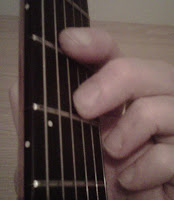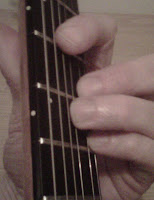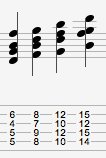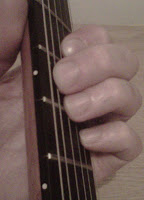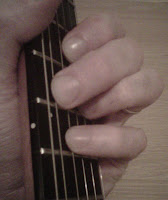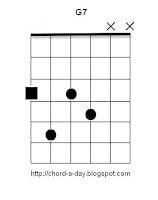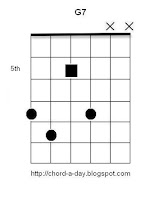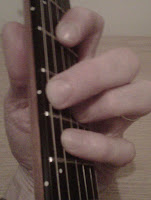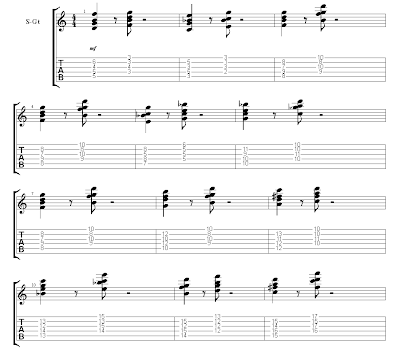But why do I need to know 12 different ways to play the same chord?
Knowing how to play the same chord in many different ways increases your musicality, enables better voice leading, allows you to play chord melodies and opens up more creative possibilities. These 7th chords can be used in blues, jazz, pop, country and more.
Each of the inversions takes the 4 notes of a 7th chord and plays them across four adjacent strings.
Each of these examples uses a G7 chord but of course you can transpose this to any other key, simply pay attention to the position of the root note (here marked with a square on the chord box diagram).
|
|
|
|
 |
|
|
|
|
Here are the individual chord boxes for each of the inversions of our G7 chord on the A, D, G and B strings of the guitar:
|
|
|
|
|
|
|
|
|
|
|
|
Here are the individual chord diagrams for each of these inversions, starting with a fragment of a common G7 barre chord at the 3rd fret:
|
|
|
|
|
|
|
|
|
|
If you have to vamp on a chord (e.g. in funk music) for a long time changing between these inversions adds musical interest and can help to build tension. Most of the time however you'll be changing between chords so it's a good idea to practice this. For example playing through a blues chord sequence (CLICK THE IMAGE TO ENLARGE):
There are many different ways to play through this so experiment with your own ways too.
Changing just one note of these inversions allows us to change all of these 7th chords to minor 7th chords by lowering the 3rd of the chord one fret.
Minor 7th chords use the 1, b3, 5, b7 degrees of the major scale.
Gm7 uses these notes: G, Bb, D and F
So we now have 12 different ways to play Gminor7:
m7b5 chords use the 1, b3, b5, b7 degrees of the major scale.
Gm7b5 uses these notes: G, Bb, Db and F
If we take our dominant 7th chord and raise the 7th one fret, we have a major 7th chord.
Major 7th chords use the 1, 3, 5 and 7 degrees of the major scale.
Gmaj7 uses these notes: G, B, D and F#
We can now play 12 different inversions of all:
- Dominant 7th chords
- Minor7 chords
- Major7 chords
- Minor7b5 chords
You can also create a host of other chords from the dominant 7th guitar chords:
- Lower the b7 one fret to create 6th chord
- Raise the root one fret to create a diminished chord
- Raise the 5th to create a 7#5 chord etc
Some of these chords have synonyms, chords that function in different ways. For example, Gm7b5 uses these notes : G, Bb, Db, F. This chord with exactly the same fingering can also function as a 9th chord, a minor6 chord and a 7#5b9 chord:
- Gm7b5 = G, Bb, Db, F
- Eb9 = (Eb) G, Bb, Db, F
- A7#5b9 = (A), C#(Db), E# (F), G, Bb
- Bbm6 = Bb, Db, F, G
Minor7th Substitutions
Gminor 7 uses the notes G, Bb, D and F. We can also think of this as:
- Ebmaj9: (Eb), G, Bb, D, F
- Bb6: Bb, D, F, G
Gmajor 7 uses the notes G, B, D and F#. We can also think of this as:
- Emin9: (E) G, B, D and F#
- 12 dominant 7th guitar chords
- 12 minor 7th guitar chords
- 12 major 7th guitar chords
- 12 m7b5 guitar chords
- 12 dominant 9th chords
- 12 7#5b9 guitar chords
- 12 major 6th guitar chords
- 12 minor 6th guitar chords
- 12 major 9th guitar chords
- 12 minor 9th guitar chords


